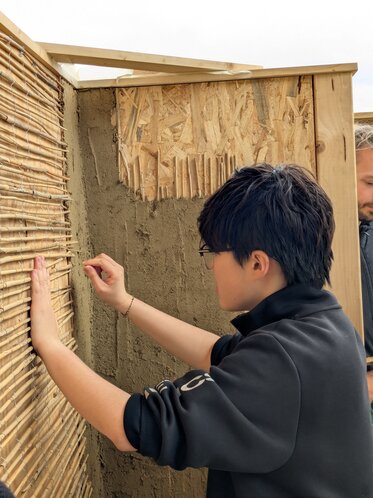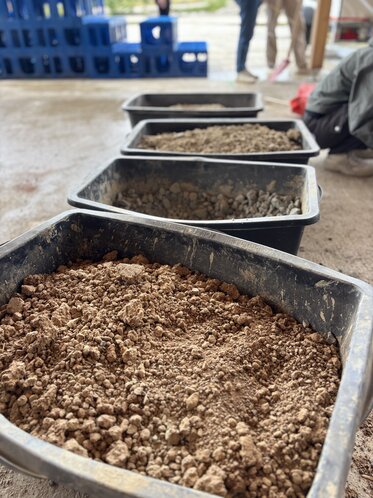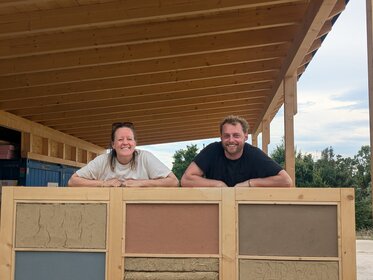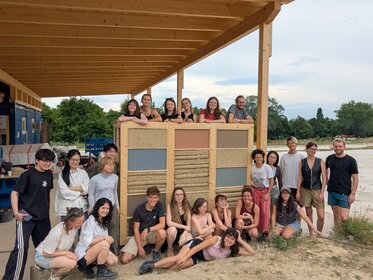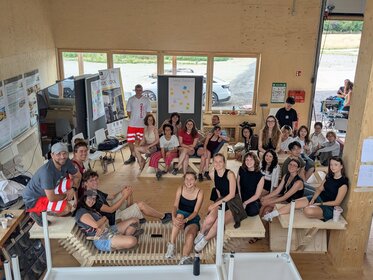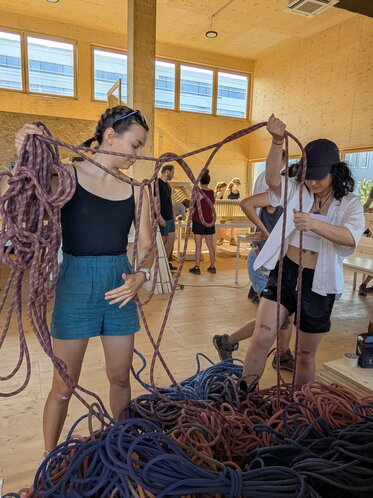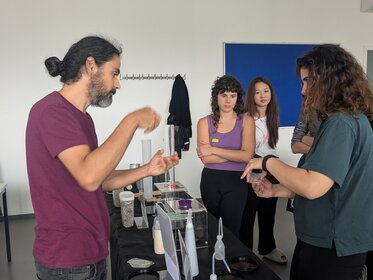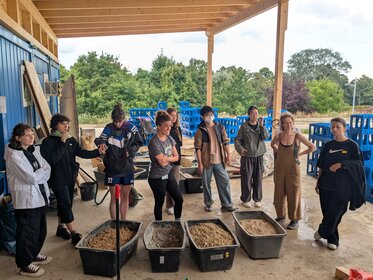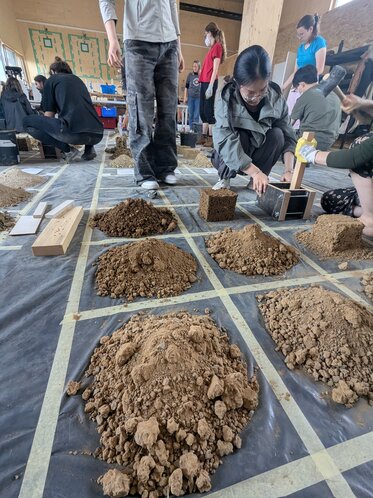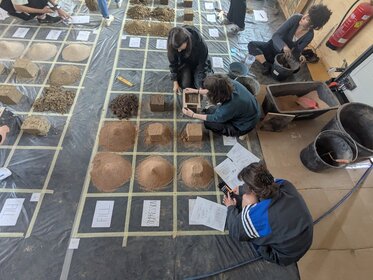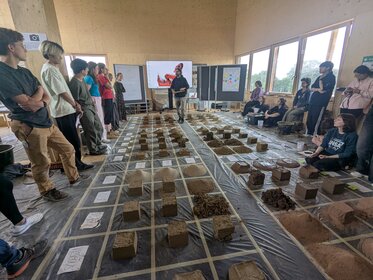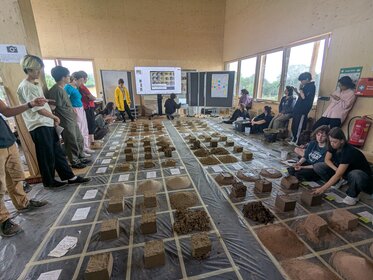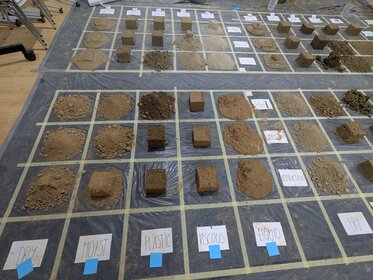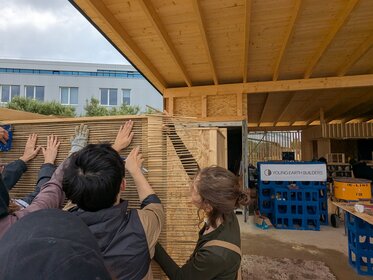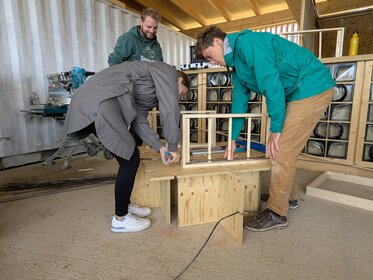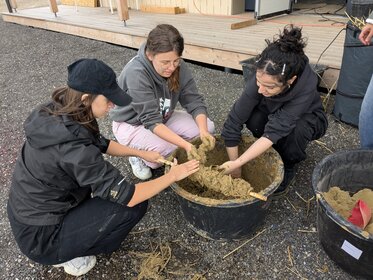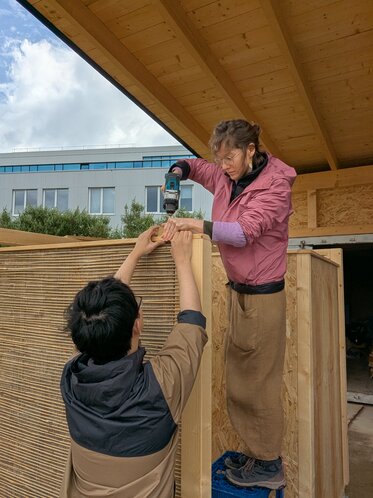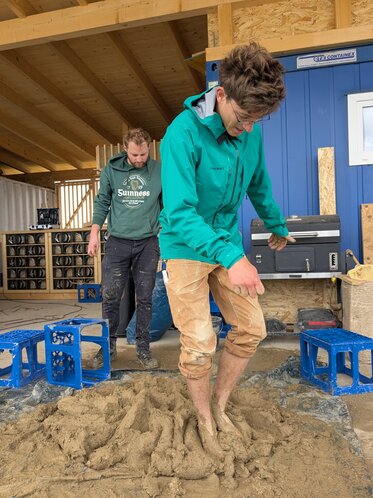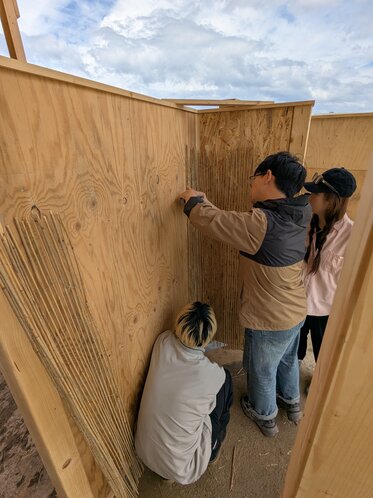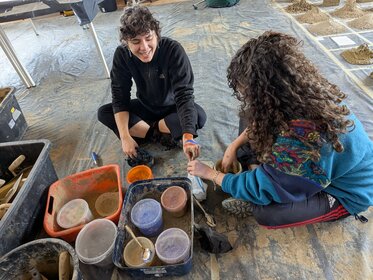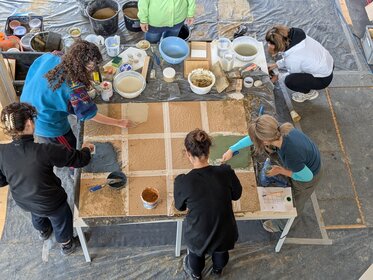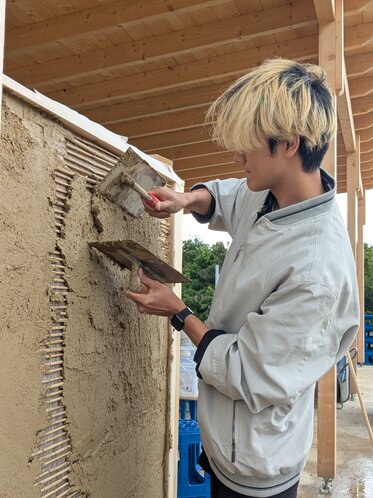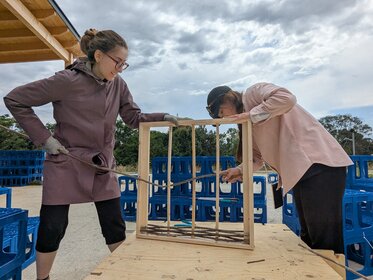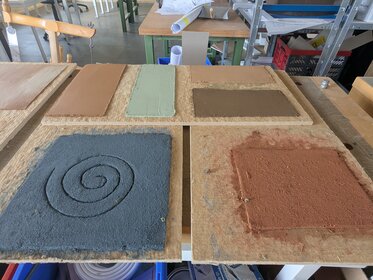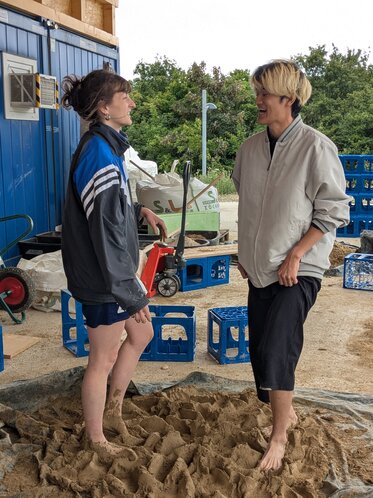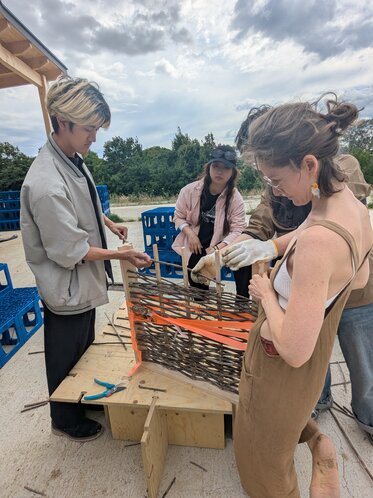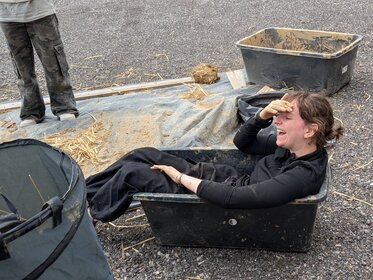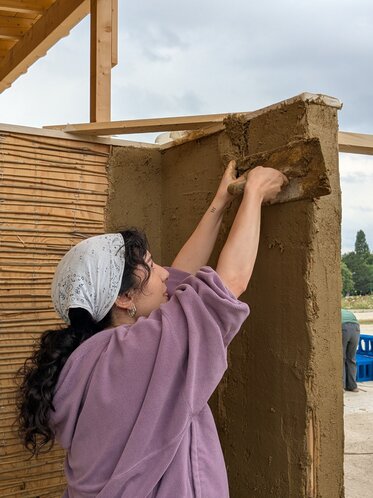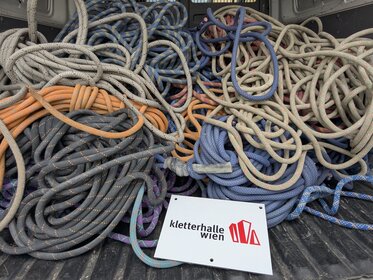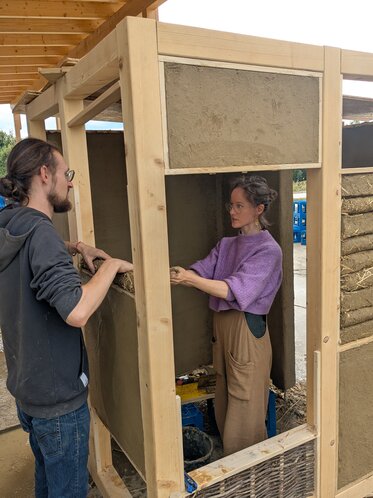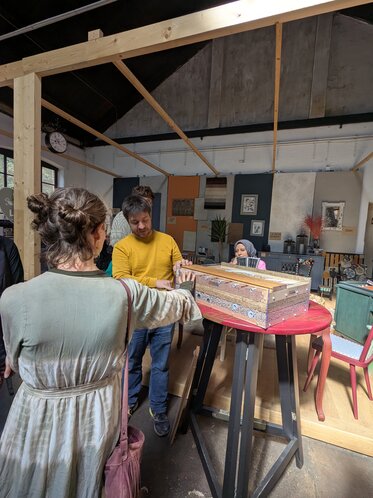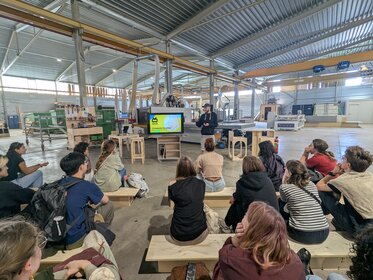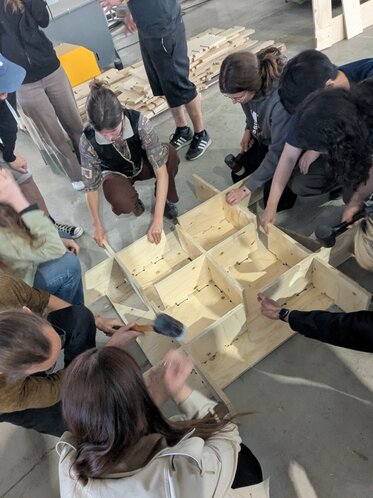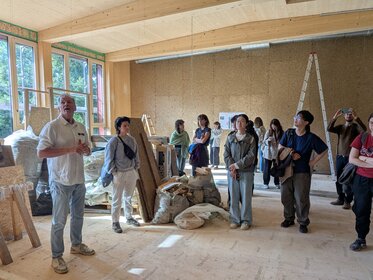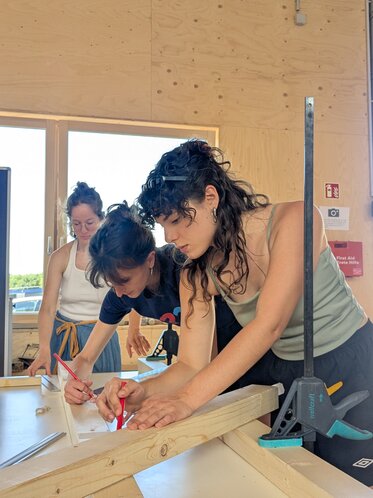Building Futures: International Summer School sus^cool turns clay and wood into sustainable architecture
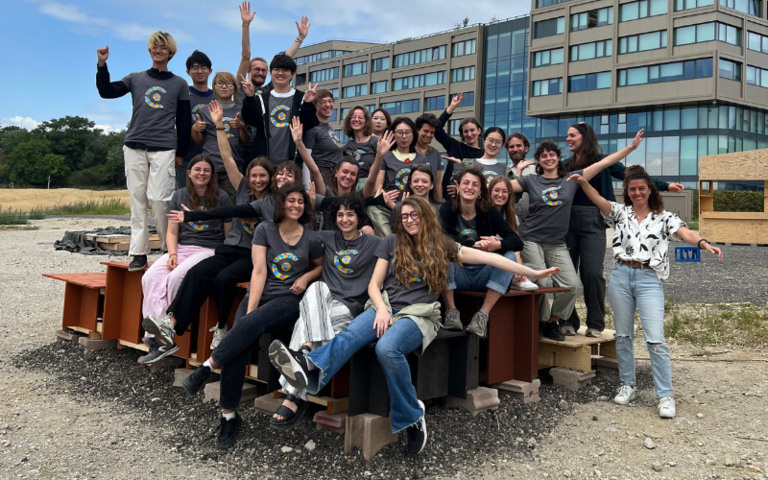
Building Futures: International Summer School sus^cool turns clay and wood into sustainable architecture
What happens when students from around the globe come together to build with their own hands? Real projects with real impact.
At the International Summer School sus^cool, hosted at University of Applied Sciences Campus Vienna, sustainable design concepts took shape in clay, wood, and reused building elements. Under the guidance of international experts, participants explored how regenerative and recyclable materials can transform the way we design and build.
The results were as diverse as they were inspiring: a changing cabin built with traditional earthen construction techniques, creative seating structures from wood, and an outdoor landscape for exchange and interaction. Each project highlighted how resource-conscious design and circular thinking can be applied directly in practice.
Hands-on, global, future-oriented
The program gathered students from 16 countries – including Mexico, China, Japan, Germany, France, and Austria – who worked side by side on solutions for climate-friendly, resource-efficient, and circular architecture. The workshops combined hands-on construction with theoretical input: from clay experiments and timber joinery to lectures by leading architects, engineers, and researchers.
Beyond the workshop walls, participants visited earth- and timber-construction companies, digital fabrication labs, and sustainable building sites, gaining insights into cutting-edge methods as well as traditional know-how.
Reuse, upcycling, and community
At the heart of sus^cool was the principle that sustainable building begins with saving resources. Clay excavated on-site was transformed into construction material, leftover wood was reimagined into functional seating, and even discarded climbing ropes found a new life in the designs.
Equally important was the intercultural exchange: evening keynotes, shared meals, and a closing barbecue created an atmosphere of collaboration and friendship that extended well beyond the building site.
By the end of two intensive weeks, the summer school had produced not only tangible architecture but also new skills, perspectives, and networks for all involved. The combination of hands-on building, academic input, and cultural exchange showcased how education can drive innovation in sustainable construction.
With sus^cool, University of Applied Sciences Campus Vienna once again proved that learning by doing – with clay under your nails and wood shavings on your shoes – is the most powerful way to shape the architects of tomorrow.
